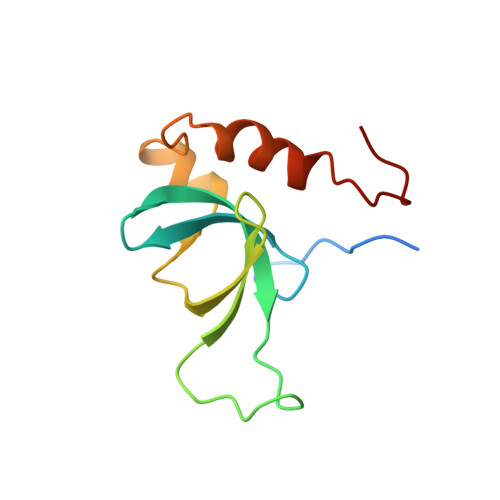Solution Structure and Heparin Interaction of Human Hepatoma-derived Growth Factor
Sue, S.-C., Chen, J.-Y., Lee, S.-C., Wu, W.-G., Huang, T.-H.(2004) J Mol Biol 343: 1365-1377
- PubMed: 15491618
- DOI: https://doi.org/10.1016/j.jmb.2004.09.014
- Primary Citation of Related Structures:
1RI0 - PubMed Abstract:
Hepatoma-derived growth factor (HDGF)-related proteins (HRPs) comprise a new protein family that has been implicated in nephrogenesis, tumorigenesis, vascular development, cell proliferation, and transcriptional activation. All HRPs share a conserved N-terminal homologous to the amino terminus of HDGF (HATH) domain, but vary significantly in the C-terminal region. Here, we show that in solution the N and C termini of human HDGF form two structurally independent domains. The 100 amino acid residue N-terminal HATH domain is well-structured while the 140 amino acid residue C-terminal domain is disordered. We determined the solution structure of the HATH domain by NMR. The core structure of the HATH domain is a five-stranded beta-barrel followed by two alpha-helices, similar to those of PWWP domains of known structures. Surface plasmon resonance results showed that the HATH domain is primarily responsible for heparin binding. On the basis of the chemical shift perturbation induced by binding of heparin-derived hexasaccharide, we identified a prominent, highly positively charged region as the putative heparin-binding site. Sequence comparison and structure prediction suggest that all HRPs are likely to adapt a similar modular structure.
Organizational Affiliation:
Institute of Biomedical Sciences, Academia Sinica, Nankang, Taipei, Taiwan 115, ROC.














